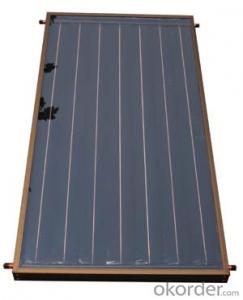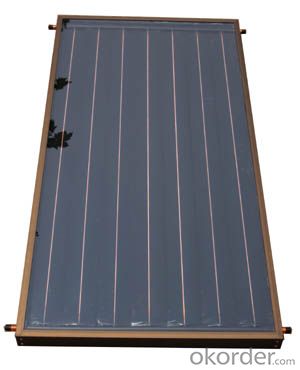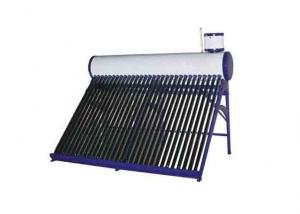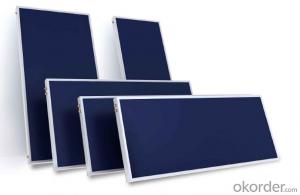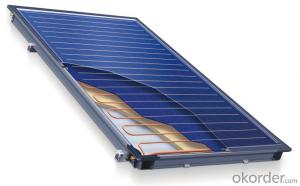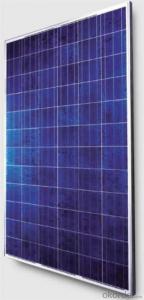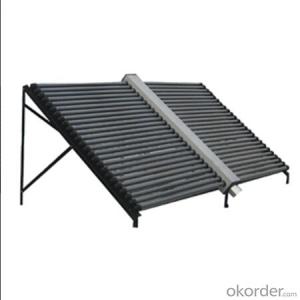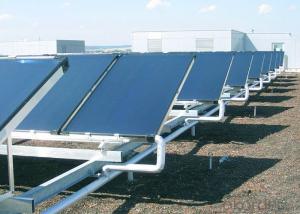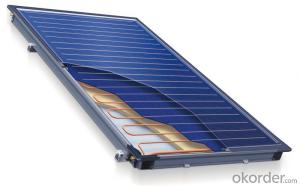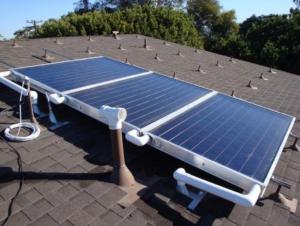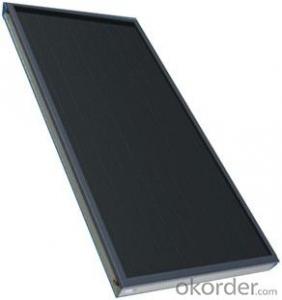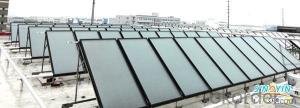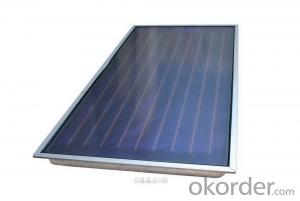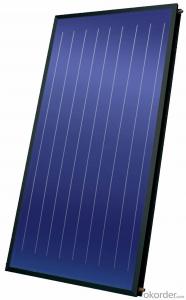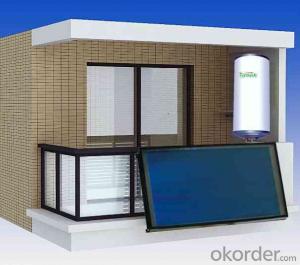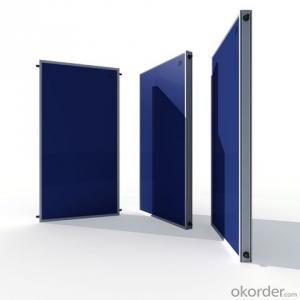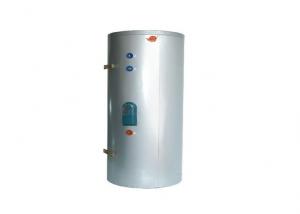Viessmann Solar Collectors - Film Flat Plate Solar Thermal Collector Bluetec Absorber Plate
- Loading Port:
- Shanghai
- Payment Terms:
- TT OR LC
- Min Order Qty:
- 500 pc
- Supply Capability:
- 10000 pc/month
OKorder Service Pledge
Quality Product, Order Online Tracking, Timely Delivery
OKorder Financial Service
Credit Rating, Credit Services, Credit Purchasing
You Might Also Like

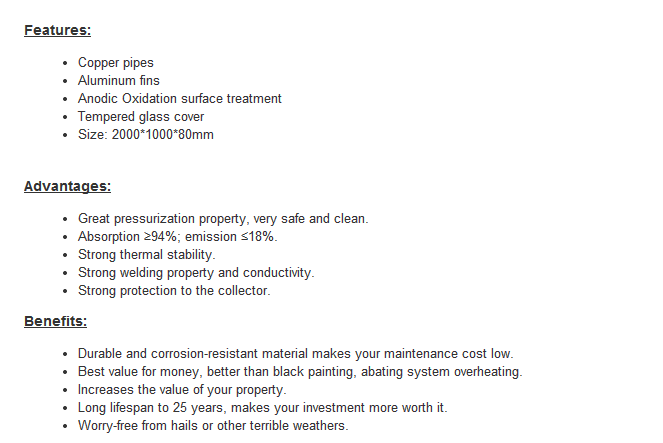
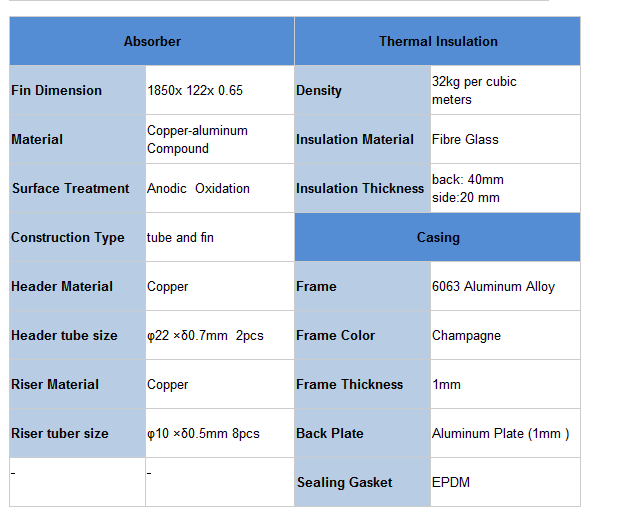
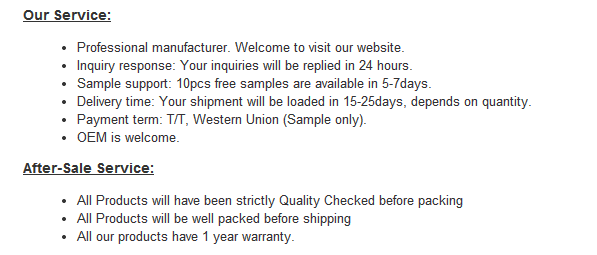
- Q: How do solar collectors contribute to reducing water consumption?
- Solar collectors contribute to reducing water consumption by providing an alternative and more sustainable method for heating water. Traditional water heating systems rely on fossil fuels or electricity, both of which require significant amounts of water for their extraction, processing, and generation. In contrast, solar collectors use the sun's energy to heat water, eliminating the need for water-intensive processes. Solar collectors work by absorbing sunlight and converting it into heat, which is then transferred to the water in the system. This process does not require any additional water, making it a water-efficient option for heating water. By utilizing solar collectors, water consumption is reduced because there is no need for water to be used in the generation of electricity or in the extraction and processing of fossil fuels. Additionally, solar collectors can also contribute to reducing water consumption by utilizing a closed-loop system. In this system, the water in the collector is circulated through pipes, heated by the sun, and then returned to a storage tank. This allows for the reuse of the same water, further reducing the need for fresh water. This closed-loop system also minimizes the risk of contamination, as the water is contained within the system and not exposed to external pollutants. Overall, solar collectors play a crucial role in reducing water consumption by providing an environmentally friendly and sustainable method for heating water. By relying on the sun's energy, they eliminate the need for water-intensive processes involved in traditional water heating systems, ultimately helping to conserve water resources.
- Q: Can solar collectors be used for heating manufacturing plants?
- Yes, solar collectors can be used for heating manufacturing plants. Solar thermal systems can capture and convert sunlight into heat energy, which can then be used for heating processes and space heating in manufacturing plants. This can help reduce reliance on traditional fossil fuel-based heating systems, lower energy costs, and promote sustainability in industrial operations.
- Q: Can solar collectors be used for heating asphalt in road construction?
- Yes, solar collectors can be used for heating asphalt in road construction. Solar thermal collectors are designed to capture sunlight and convert it into heat energy. This heat energy can then be used for various applications, including heating asphalt. By using solar collectors, road construction companies can reduce their reliance on traditional heating methods such as propane or natural gas burners, which can be costly and produce greenhouse gas emissions. Solar collectors work by absorbing sunlight and transferring the captured energy to a fluid medium, such as water or air. This heated fluid can then be used to heat asphalt during the road construction process. The heated asphalt becomes more pliable and easier to work with, improving its quality and reducing the risk of cracks and other defects in the road surface. Using solar collectors for heating asphalt in road construction offers several benefits. Firstly, it is a renewable and sustainable energy source, as sunlight is abundant and freely available. This can help reduce the environmental impact of road construction activities. Secondly, it can lead to cost savings for road construction companies, as they can reduce their reliance on fossil fuels for heating purposes. Additionally, solar collectors require minimal maintenance and have a long lifespan, making them a reliable and efficient heating solution for asphalt in road construction. However, it is important to note that the effectiveness of solar collectors for heating asphalt may vary depending on various factors, such as the location, climate, and size of the project. In areas with limited sunlight or during periods of low solar intensity, supplementary heating methods may be required. Additionally, the design and installation of solar collectors should be done by professionals to ensure optimal performance and safety. Overall, solar collectors can be a viable and environmentally-friendly option for heating asphalt in road construction, offering both economic and environmental benefits.
- Q: Do solar collectors require direct sunlight to operate?
- Yes, solar collectors do require direct sunlight to operate efficiently. While they can still generate some energy on cloudy or overcast days, direct sunlight provides the optimal conditions for maximum energy production.
- Q: Can solar collectors be used in earthquake-prone areas?
- Yes, solar collectors can be used in earthquake-prone areas. However, careful consideration must be given to the installation and structural design of the collectors to ensure they can withstand seismic activity. Additionally, regular maintenance and inspections are necessary to ensure their continued safe operation in such areas.
- Q: Can solar collectors be used for heating event venues and convention centers?
- Yes, solar collectors can definitely be used for heating event venues and convention centers. Solar thermal systems can efficiently capture sunlight and convert it into heat energy, which can then be used to provide heating for large spaces. This renewable energy source offers a sustainable and cost-effective solution for meeting the heating demands of event venues and convention centers.
- Q: What is the working principle of flat solar collectors?
- At the same time, due to the temperature of the heat absorber, through the transparent cover and the shell to the environment heat loss, constitute a flat solar collector heat loss.
- Q: Can solar collectors be used for heating schools and universities?
- Yes, solar collectors can be used for heating schools and universities. Solar thermal systems can be installed to collect and convert sunlight into heat energy, which can then be used to provide heating to buildings. This renewable energy source can significantly reduce the reliance on traditional heating systems, leading to cost savings and environmental benefits for educational institutions.
- Q: Are solar collectors eligible for government incentives?
- Yes, solar collectors are eligible for government incentives.
- Q: How do solar collectors impact water pollution?
- Solar collectors have a positive impact on water pollution as they do not produce any harmful emissions or pollutants during their operation, unlike traditional power sources like coal or oil. By harnessing energy from the sun, solar collectors help reduce the reliance on fossil fuels, thus minimizing the release of pollutants into water bodies through industrial processes or power generation. Therefore, solar collectors contribute to cleaner water resources and help mitigate water pollution.
Send your message to us
Viessmann Solar Collectors - Film Flat Plate Solar Thermal Collector Bluetec Absorber Plate
- Loading Port:
- Shanghai
- Payment Terms:
- TT OR LC
- Min Order Qty:
- 500 pc
- Supply Capability:
- 10000 pc/month
OKorder Service Pledge
Quality Product, Order Online Tracking, Timely Delivery
OKorder Financial Service
Credit Rating, Credit Services, Credit Purchasing
Similar products
Hot products
Hot Searches
Related keywords
